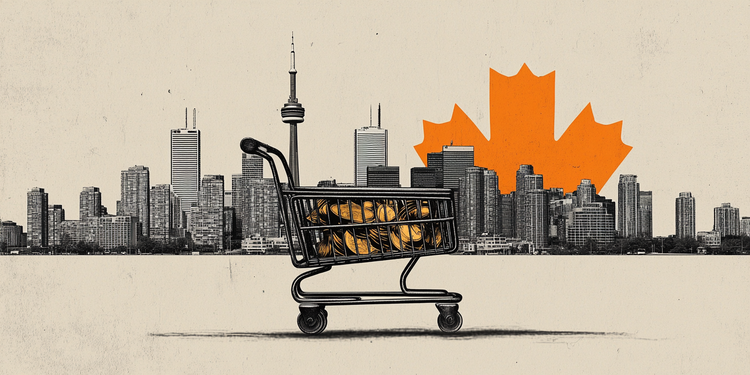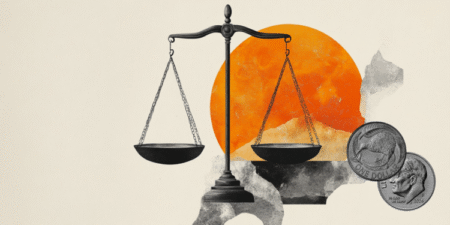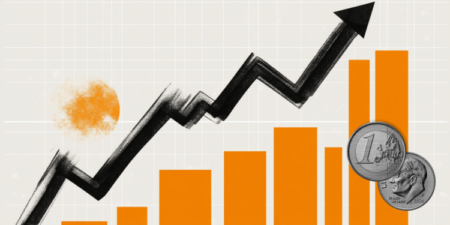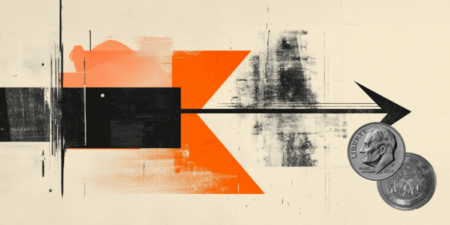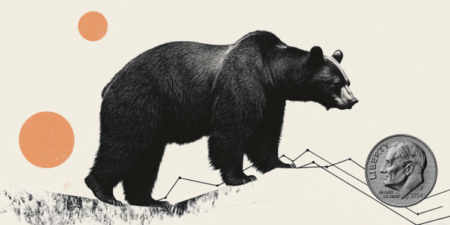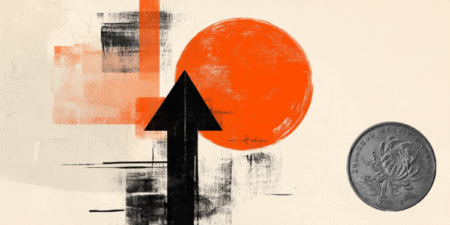- The Canadian Consumer Price is expected to hold steady at 2.6% YoY in March.
- The Bank of Canada will announce its monetary policy decision on Wednesday.
- The Canadian Dollar retains its strength against its American rival, lower lows ahead.
Statistics Canada will release the March Consumer Price Index (CPI) report on Tuesday. Annualised inflation is expected to have held steady at 2.6%, matching the February reading. Market players anticipate a monthly advance of 0.7%, easing from the previous 1.1%. At the same time, the Bank of Canada (BoC) will release its own core CPI estimates, which measure underlying inflation by trimming volatile food and energy prices. According to the latest release, core BoC CPI rose 0.7% MoM and 2.7% YoY in February.
The figures are relevant ahead of the Bank of Canada’s monetary policy announcement on Wednesday. The central bank is widely anticipated to keep the benchmark interest rate at 2.75%. Officials trimmed it when they met on March 12, the seventh consecutive cut, leaving the main rate at its lowest since 2022.
The expected uptick in inflation is more worrisome than what policymakers may let see. The United States (US) President Donald Trump’s decision to impose tariffs on pretty much all trading partners has taken its toll. Back and forth in Trump’s announcement still results in Canada being charged with 25% levies on exports to the US.
Ahead of the announcement, the USD/CAD pair trades near the multi-month low posted earlier in April at 1.3827.
What can we expect from Canada’s inflation rate?
BoC officials are well aware of the risks related to the trade war and its potential effects on the local economy. Slowing growth and higher inflationary pressures are the heart of concerns, not just in Canada.
Policymakers also anticipated volatile inflation levels amid tariffs but expected it to remain near 2% over the projection horizon. Would they maintain such a view? That’s something that has yet to be seen after the release of this CPI report.
Officials also expressed that the White House decision to impose massive tariffs “has emerged as a major source of uncertainty.” And it is not the only one. Investors are unsure of what the BoC will do this week. While there’s a major consensus indicating an on-hold decision, there’s a large portion of analysts anticipating another 25 bps interest rate cut.
A rate cut could be in the table if CPI figures are below expectations. A rate hike, on the other hand, seems unlikely at this point, yet higher-than-anticipated figures should lead to speculation that rate cuts are over in the near future. A hawkish shift may lead to a firmer Canadian Dollar (CAD), although investors may hold their fire during the CPI release ahead of the BoC’s confirmation a day after.
Additionally, it is worth noting that increased fears of a recession may force the BoC to trim interest rates, even if inflationary pressures increase by more than anticipated in March.
As said, uncertainty is high among all market participants. With that in mind, the reaction to the data release could be short-lived and quickly overshadowed by fresh tariff-related headlines.
When is the Canada CPI data due and how could it affect USD/CAD?
Canada’s March inflation report will be published on Tuesday at 12:30 GMT, with market participants expecting price pressures to remain broadly unchanged from February. As usual, the divergence between the market expectations and the actual figures will be responsible for CAD’s reaction.
Generally speaking, higher-than-anticipated figures would suggest the BoC may need to adopt a more hawkish stance and, hence, push the CAD higher vs other rivals. The opposite scenario is also valid, with softer-than-anticipated readings suggesting the BoC could keep trimming rates. Yet, at the same time, a steep acceleration in price pressures could spur concerns about Canadian economic health and, hence, weigh on the CAD.
Valeria Bednarik, Chief Analyst at FXStreet, notes: “Ahead of the announcement, the Canadian Dollar consolidates gains against the battered US Dollar (USD). The daily chart for the USD/CAD pair shows that technical indicators lost their downward momentum at oversold levels, yet there are no immediate signs of downward exhaustion. Furthermore, the pair is developing below all its moving averages, with the 20 Simple Moving Average (SMA) accelerating south below a flat 100 SMA, both far above the current level. Overall, lower lows remain on the table.”
Bednarik adds: “USD/CAD is on a pause ahead of first-tier events, but the technical risk remains skewed to the downside. The monthly low at 1.3827 is the immediate support ahead of the 1.3470 region. The CPI needs to be shockingly poor to trigger a break below the latter. Resistance, on the other hand, can be found at around the 1.3900 threshold, en route to 1.3950. Further gains towards 1.4000 will likely attract selling interest.”
US-China Trade War FAQs
Generally speaking, a trade war is an economic conflict between two or more countries due to extreme protectionism on one end. It implies the creation of trade barriers, such as tariffs, which result in counter-barriers, escalating import costs, and hence the cost of living.
An economic conflict between the United States (US) and China began early in 2018, when President Donald Trump set trade barriers on China, claiming unfair commercial practices and intellectual property theft from the Asian giant. China took retaliatory action, imposing tariffs on multiple US goods, such as automobiles and soybeans. Tensions escalated until the two countries signed the US-China Phase One trade deal in January 2020. The agreement required structural reforms and other changes to China’s economic and trade regime and pretended to restore stability and trust between the two nations. However, the Coronavirus pandemic took the focus out of the conflict. Yet, it is worth mentioning that President Joe Biden, who took office after Trump, kept tariffs in place and even added some additional levies.
The return of Donald Trump to the White House as the 47th US President has sparked a fresh wave of tensions between the two countries. During the 2024 election campaign, Trump pledged to impose 60% tariffs on China once he returned to office, which he did on January 20, 2025. With Trump back, the US-China trade war is meant to resume where it was left, with tit-for-tat policies affecting the global economic landscape amid disruptions in global supply chains, resulting in a reduction in spending, particularly investment, and directly feeding into the Consumer Price Index inflation.
Economic Indicator
BoC Consumer Price Index Core (MoM)
The BoC Consumer Price Index Core, released by the Bank of Canada (BoC) on a monthly basis, represents changes in prices for Canadian consumers by comparing the cost of a fixed basket of goods and services. It is considered a measure of underlying inflation as it excludes eight of the most-volatile components: fruits, vegetables, gasoline, fuel oil, natural gas, mortgage interest, intercity transportation and tobacco products. The MoM figure compares the prices of goods in the reference month to the previous month. Generally, a high reading is seen as bullish for the Canadian Dollar (CAD), while a low reading is seen as bearish.
Read more.
Next release:
Tue Apr 15, 2025 12:30
Frequency:
Monthly
Consensus:
–
Previous:
0.7%
Source:
Statistics Canada
Read the full article here







